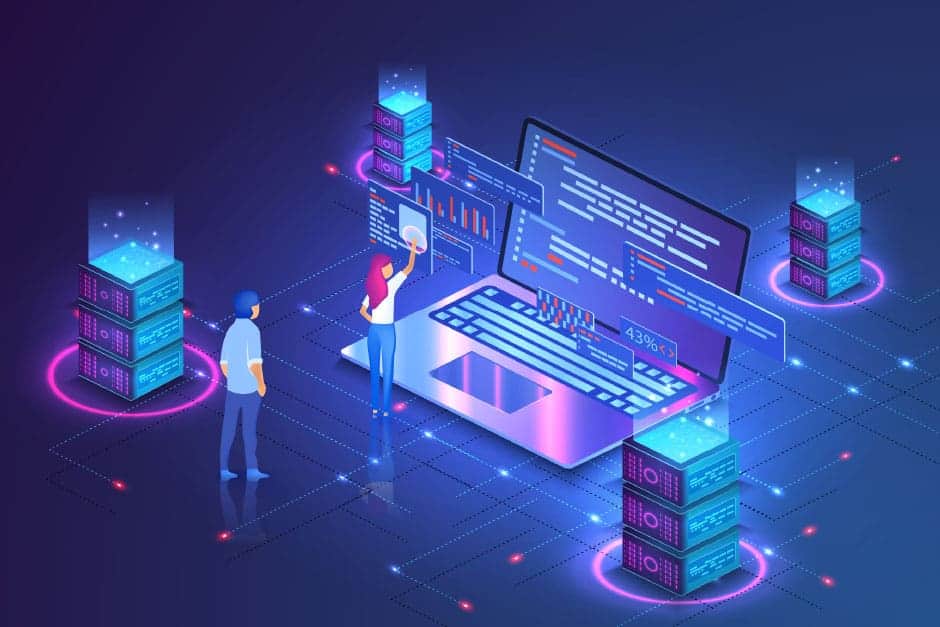
A data driven, connected, collaborative home care sector
By David Lynes, CEO & Founder of Unique IQ
It has been well-documented that the unprecedented circumstances we have found ourselves in as a result of the coronavirus pandemic have led to an acceleration in the use of technology.
From the widespread adoption of Zoom for business meetings and social hangouts alike, to rapid deployment of digitalisation projects that had languished at the bottom of agendas for years, technology has helped us to adapt how we work and how we live.
Home care providers agree that greater use of technology will be the thing to most impact their services after the pandemic. So what might that home care technology look like?
A world of data
Our vision is for a world with joined-up data about care. Where information about people receiving care is connected, not siloed, to give a bigger picture of what they need to live a fulfilling life. Where software providers work in collaboration, not confrontation, aligning their systems with the shared purpose of supporting the delivery of outstanding home care.
Accurate and reliable data about home care is so limited. Whilst valiant efforts are made by bodies such as the UKHCA and LaingBuisson, there is no nationalised data set that gives the complete picture of home care within the UK.
In a recent panel discussion hosted by the UKHCA, William Laing called for real-time data collection for home care, without falling into the trap of large-scale data collections that are published at a delay of several months: “What’s needed is real-time data generated as a by-product of digitisation of homecare services”.
This view was backed by Rosamond Roughton, Director-General for Adult Social Care at the Department for Health and Social Care, who recommended that there be national policy for data sharing to make it quicker and easier for all.
Similarly, Professor Martin Green of Care England has called on the CQC to lead the care sector’s digital agenda, stating that: “If we had good access to real-time data, there would be far less need for the snapshot approach that we’ve got at the moment with inspections.”
As software providers we are uniquely placed to make this happen. Many of us are providing real-time insights to the home care agencies that use our software, insights that are relied upon to ensure safe, efficient and responsive care. Why not join forces to make those insights even more powerful through big data analysis? And find a way for that data to inform a nationwide understanding of care? To provide that much-needed evidence base for social care, the absence of which is so frequently a barrier to recognition and investment.
Home tech
Like many other aspects of the society we live in, COVID-19 has raised substantial questions about what the right kind of care looks like. There is great interest right now in the future of care, with technology at the forefront of these discussions.
Technology within the home was already on the rise before the coronavirus outbreak of course, but it is likely now to appear front and centre when shaping future care provision.
In hft’s Sector Pulse Check released at the start of 2020, three quarters of care providers surveyed reported using assistive technologies, but only 19% had them as a core part of their service. One in five providers did not use any technology at all.
Current research by Northumbria University is pointing to a digital approach to support home care. In a “living lab”, researchers are testing and developing a range of smart technologies – sensors, apps and virtual assistants like Alexa – to support vulnerable people to live more independently.
But it is vital that this technology talks. Too often, the data collected by these great pieces of kit sits isolated. Imagine the power if we were to bring all that data together into a genuine and detailed “big picture” of the circumstance of a care recipient’s life. What a meaningful difference could care make when it was informed by such powerful intelligence?
MVP mentality
Finally, if there is one lesson to be taken since 2020, it’s that we can change and we can do it quickly. We are working in ways that we previously thought impossible. Whether it’s video appointments or digital note taking, practices that were once viewed with suspicion or ridicule are now the norm.
To the surprise of many, people receiving care are embracing technology as much as providers. Older adults have adopted video calling in droves to keep in touch with family and friends. And we’ve seen a huge increase in the number of people requesting access to our client and family portal, which helps family members take an active role in the care of their loved ones from a distance, be that booking a visit, viewing notes or sharing a memory.
Our hope is that the adaptability that has happened over recent months will lead to a greater ‘MVP’ or ‘minimum viable product’ approach in future. Defined in the technology world as a version of a new product which allows for a maximum amount of learning with the least effort, an MVP approach allows for much greater pace of change and drives innovation.
It would see care providers more inclined to pilot, to assess a piece of technology on its merits in action, before refining ahead of wider rollout. This approach would allow the home care sector to reach that glimpse of a different future that we’ve seen this year, before it fades into a distant memory.
Unique IQ’s vision of home care technology in the future? A world where outstanding care is fuelled by the very best of what technology has to offer. That means constant innovation, a connected universe, meaningful intelligence, and the power to make truly fundamental change for the better.